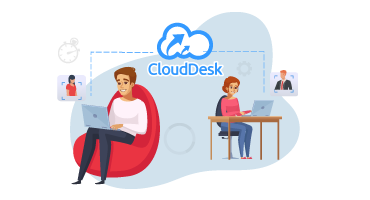How to Track Employee Productivity without Micromanaging
Many businesses have chosen to shift to a work-from-home structure and re-align virtual collaboration in order to survive in these unprecedented times. Employers found it difficult to track the productivity of their remote employees as a result of the abrupt increase in remote working. One of the most significant challenges is boosting the productivity of the entire remote team at the same time so that each person can offer their best for the company.
The sudden change has resulted in several new challenging scenarios in which employers were initially uncertain about managing their remote workforce, but the greatest advantage appeared to them in technological form. An employee monitoring software is an excellent way to evaluate the execution of tasks and to discover how efficient your procedures and workflows are.
You can set benchmarks for individual tasks by using employee tracking data. Then if trends indicate that they have been consistently missed, your data may reveal if this is as a result of a process, the need for additional training, uneven workloads, or something else.
Micromanagement is not a software problem; it is a people’s problem. As productivity software can be used to track individual performance in real-time, it offers great value by collecting productivity metrics in aggregate. The software gathers all the tiny data points and paints a landscape picture of the performance of your organization. Therefore, change the way you view the (work) world.
Avoid the temptation to view data primarily at individual levels, while utilizing employee monitoring software. Use team-wide data, instead, to stay focus on bottlenecks prevention, finding workflow efficiencies, and identifying trends.
Focus on a broader picture of millions of data points from productivity and analytical software, instead of bringing attention to individual activities and behavior. Don’t let yourself become blind towards the greater picture by zooming on the smaller details.
Don’t Micromanage–Macromanage
Adding data from employee monitoring software allows a detail insight of employee work activity that might otherwise be observed during the bustle and hustle of daily operation. This can help you to discover bottlenecks that may result in productivity problems later on, whether the bottleneck is an individual employee or an inefficient process.
You can not hit a target you can’t see. You can recruit your workers to work as a team to address the inefficiencies of your organizations by visualizing the monsters in the darkness. The visibility of data is about empowerment rather than demoralization.
Be Transparent
There is a long way to a policy of transparency. The sharing with your employees of productivity data created by time tracking software enables them within the process of productivity monitoring. This includes them on the journey.
Likewise generating more on-the-ground feedback, involving employees in the productivity tracking process shows what is and is not being captured. You must show employees what is happening “under the hood”, to make it clear you are not micro-analyzing each working minute.
Show employees how the acquired information is being utilized, how it is secured, and how their privacy is being respected. Transparency around productivity may help employees’ career progression by allowing them to monitor and improve day-to-day.
Final Thoughts
Every enterprise is connected to the same 24 hours in a day. “Winning” may look like it comes down to squeezes every minute out of the day, but an incessant drive to maximize productivity might blind us to long-term effects.
Micromanaging is counterproductive when we speak of organizational productivity, as it has been seen. If your staff is judged solely on the ability to appease micro-managers, they are either always underperforming or have little to strive for beyond the minimal. So recall the above guidelines when attempting to strive for productivity.
In 2019, 90% of employees believe flexible arrangements promote employee morality, according to a workplace survey conducted by Staples. This helps to ensure a healthier work-life balance and saves stresses of the commute and time.
In addition, the survey showed that 77% of employees believe that a remote working policy will reduce the running cost of the agency. Whereas you should be aware of some software and methods to establishing and managing a remote team, with respect to building a healthier work-life balance.












